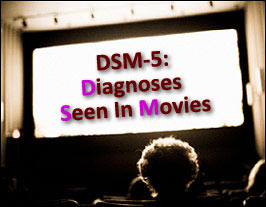
- Using movies to understand common DSM diagnoses
- Learning about the DSM-5 with fun and the movies
- What can movies teach us about diagnosis?
Movies are particularly well suited to depict psychological phenomena. The combination of images, music, dialogue, lighting, camera angles, and sound effects in a film mimic thoughts and feelings that occur in our consciousness. Since characters in many popular films portray persons who live with mental disorders, these depictions offer a unique learning opportunity.
Therefore, films can help us learn about the use of the DSM-5 for effective treatment planning and communicating with colleagues, as well as with insurance companies, in an enjoyable and emotionally engaging way. Following are a few examples of how these movies can illuminate the multifaceted nature of mental disorders.
Our Latest Online CE Course
DSM-5: Diagnoses Seen in Movies
Developed by Cinema Therapy Expert Dr. Birgit Wolz
5 CE Credit Hours
Samples of Movies & Diagnoses:
- Young Adult illustrates borderline personality disorder.
- Wall Street: Money Never Sleeps depicts narcissistic personality disorder.
- A Beautiful Mind offers a powerful opportunity to understand schizophrenia.
- Flight demonstrates substance-related disorders.
- Silver Linings Playbook offers the opportunity to learn about many aspects of bipolar disorder.
- Mad Love depicts a character with symptoms of cyclothymic disorder.
- Girl Interrupted invites us to discuss major depression and the complexities of differential diagnosis (major depression vs. borderline personality disorder).
- American Splendor offers an opportunity to learn about persistent depressive disorder (dysthymia).
- As Good As it Gets illustrates almost every possible symptom of obsessive-compulsive disorder.
- The Sopranos teaches about panic disorder.
- Annie Hall illuminates generalized anxiety disorder.
- In Country depicts a Vietnam War veteran with severe post-traumatic stress disorder.
Did you know these facts about the DSM-5?
- One of the biggest changes in the DSM-5 is the elimination of the multi-axial system.
- In the revised manual, substance abuse and substance dependence have been combined into one overarching category called substance use disorder.
- The introduction of a severity scale for substance use disorders is meant to help addiction treatment fall in line with physical medicine.
- In the DSM-5, bipolar disorders are given a section separate from depressive or unipolar disorders.
- In the revised DSM-5, obsessive-compulsive disorder and post-traumatic stress disorder have been removed from the family of anxiety disorders and given their own diagnostic categories.
- The DSM-5 pays more attention to the behavioral symptoms that accompany PTSD than had the DSM-IV.
- Critics are concerned that normal grief becomes major depressive disorder, thus medicalizing and trivializing our expected and necessary emotional reactions to loss.
- Critics are also concerned that the revised manual will divert precious mental health resources away from those who most need them.